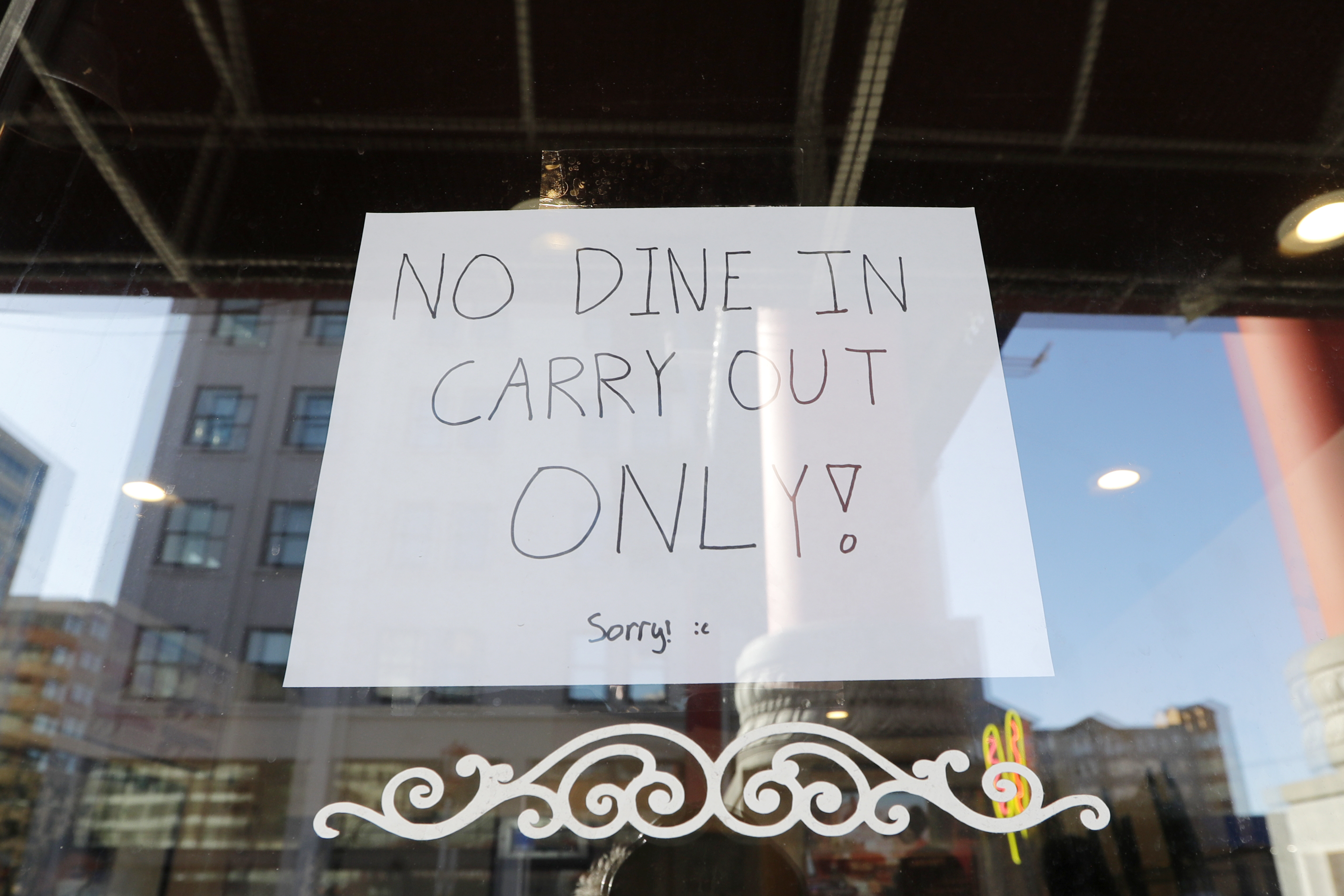
A sign posted in a restaurant window in the Chinatown-International District advises of only take out orders Monday, March 16, 2020, in Seattle. Washington Gov. Jay Inslee on Monday ordered all bars, restaurants, entertainment and recreation facilities to temporarily close to fight the spread of the new coronavirus in the state with by far the most deaths in the U.S. from the COVID-19 disease. Take out and delivery food orders are still allowed. (AP Photo/Elaine Thompson)
Prior to the coronavirus crisis, the U.S. foodservice industry had only dabbled in omnichannel ordering and delivery. But by the middle of March, with necessity being the mother of invention, operations were forced to quickly reinvent themselves, shifting to takeout, curbside delivery, and customer pick-up systems at retail hosts.
Terra Incognita
As consultants, one of the top questions we hear is whether customers will ever return to brick-and-mortar restaurants at the same rates seen prior to the pandemic. The answer is not a simple one. The truth being that conventional patron behaviors have been rocked to the core over these past four months. This, paired with disruptions to the workforce structure (e.g., reduced commuting, working from home, zoom meetings, lack of childcare), may have lasting impact on what the next foodservice model will look like and which temporary consumer practices might become long-term habits.
Consumers Weigh In
In May, with the help of Sandelman & Associates, we asked heavy quick-service users when they expected to return to “normal” restaurant habits. More than half (57%) reported they would return if there were no new Covid-19 cases and after all pandemic warnings are lifted.
When do you think you will return to your normal restaurant habits?
| After no new cases are reported | 31% |
| After “pandemic” warning has been officially lifted | 26% |
| After schools and workplaces return to normal operations | 20% |
| After the stock market and other economic indicators are healthy again | 6% |
| Other reasons | 4% |
| Don’t know | 13% |
Base: 539 respondents, May 2020.
Depending on the source, we are six months to a year away from a publicly available vaccine for the novel coronavirus. However, there are still a number of obstacles operators will face from the virus, such as the risk of mutation and the willingness of the public to try the vaccine. Even then, nearly half of consumers (45%) would not return to normal restaurant habits for a month or more. On the positive side, however, under the same conditions, 20 percent would return immediately and 30 percent would return after a couple of weeks.
How soon will you return to your normal restaurant habits?
| Immediately | 21% |
| After a couple of weeks | 30% |
| After a month | 25% |
| More than a month | 20% |
| Don’t know | 5% |
Base: Those who will return once pandemic warning is officially lifted. (May 2020.)
What FSIP Expects
With all of the uncertainty surrounding the foodservice and hospitality industries, we believe that restaurants will look drastically different in the next 12-18 months. Our own analysis and experience point to a few potential outcomes and implications for food companies:
1. Look to cloud/dark/ghost kitchens to expand rapidly. This means operators will lease space from a centralized kitchen, which may or may not include competing concepts and independents. Real estate and operating expenses will be greatly reduced and give restaurateurs greater flexibility in menu
2. Delivery aggregators will consolidate and more concepts will deliver in-house. With the recent news that Uber purchased Postmates, expect to see more consolidation in the delivery market. Also, operators realize if they can internally manage delivery (not an easy feat), they will have greater control over the customer experience and eliminate skyrocketing fees.
3. Operators will look directly to manufacturers for procurement. This is a touchy subject for the industry, much like when GPOs entered the scene a decade or so ago. This will be a slippery slope with manufacturers and foodservice distributors, but disruptive events like Covid-19 typically evolve business models to meet the needs of the current marketplace. Unilever’s purchase of Foodservice Direct in 2018 is a prime example. We expect e-commerce to take some — but not all — of the share from broadline distributors once the pandemic subsides.
4. Curbside will continue to flourish, with packaging playing a bigger role. As full-service restaurants account for half of all restaurant share, look for curbside delivery to continue to be the lifeblood of this segment. Packaging will become important as a vehicle of branding, durability and function.
5. Restaurants may increasingly offer retail foods. In April, Panera bread offered retail food for sale, taking a cue from the c-store model. With so much uncertainty around the pandemic and with restaurateurs losing money, look for businesses to become creative.

Recent Comments